G2C Online

Did you know dolphins can stay constantly awake for weeks?
Jun 25th
Young parents and workaholics are very familiar with the effects of sleep deprivation, and almost everyone is agreed – it’s not the most pleasant place to be! Anyone who has ever tried to be, or had to be, awake continuously for several days and nights will know how a stretch of busy time without a nap reduces us to clumsy, incoherent creatures in a daze. But did you know that dolphins have the incredible ability to stay constantly awake – and alert – for more than two weeks? So how do they do that? This is the question Brian Branstetter, a marine More >
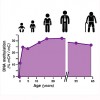
The Epigenetic code and brain development
Jan 21st
Epigenetics has been a hot topic in molecular biology for several years and it´s fascinating to see how it is now trending in general news as well. I was reminded of this fact when hearing Fatimah Jackson speak at the American Museum of Natural History´s recent SciCafe. So what is epigenetics? First of all it´s not as simple as the genetic code!
The name is derived from epi- (Greek: επί- over, outside of, around) combined with genetics, literally meaning being “over genetics”. Epigenetics is the study of heritable changes in gene activity which are NOT caused by changes in the DNA sequence. While the idea that More >
Naughty or nice? The Moral Molecule
Jan 9th
Oxytocin (ball-and-stick) bound to its carrier protein neurophysin (ribbons) based on: "Crystal structure of the neurophysin-oxytocin complex" Rose, J.P., Wu, C.K., Hsiao, C.D., Breslow, E., Wang, B.C. (1996) Nat.Struct.Biol. 3: 163-169
I recently enjoyed a truly mind-blowing talk at the New York Academy of Sciences. The Neuroeconomist (yes, he studied Economy and is founding director of Claremont´s Center for Neuroeceonomic Studies) Paul J. Zak spoke about his research on the brain chemical oxytocin (OXT) – the so-called “love hormone” – and how he showed that OXT is the source of love and prosperity, triggering a wide variety of physical and psychological effects More >
Brain size and intelligence- why a human is smarter than a mouse
Nov 13th
“Section through the cerebral cortex of a mouse, stem cells can be seen glowing in green, mature nerve cells in red; cell nuclei for both types of cell are shown in blue.” Source: IMBA
Your brain is a complex, highly organized organ. Each mammalian brain is made of approximately 10-15 billion nerve cells, called neurons. And each brain is built of thousands of different types of neurons, called neuronal subtypes. Neurons have the amazing ability to gather and transmit electrochemical signals, the more neurons the faster signals can be transmitted; think of them like the gates and wires in a computer. More >
Twilight’s Edward and Bella – Romance or Rabies? A scientific view on vampires
Sep 28th
Today, September 28th, is world rabies day! Rabies is an animal borne viral disease that kills nearly 100 percent of its victims once the infection reaches the brain. But have you ever wondered how this fatal virus can affect the brain, causing victims to become ´rabid´? I was thinking about it in those autumn days when all these pumpkin-spice lattes and fancy Hokkaido soups around the city indicate that Halloween is just around the corner – which is always a good excuse to enjoy classic splatter movies like Shawn of the Dead or the zombie film I Am Legend once again, or More >

Decoding ‘Mad snake disease’
Aug 28th
A boa constrictor with IBD, "mad snake disease".
Have you ever seen a sick boa constrictor? All of a sudden they start shedding, develop head tremors and secondary infections, twisting up into knots and wasting away. These poor animals may have acquired a fatal infectious disease called inclusion body disease (IBD). The disease can rapidly progress to the nervous system, with behavioral abnormalities such as disorientation, corkscrewing of the head and neck, holding the head in unnatural positions, or rolling onto the back. Affected snakes either die quickly or starve slowly over several years. The disease was first observed in captive snakes More >
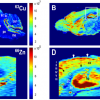
A novel approach for curing Alzheimer´s disease
Jun 24th
Alzheimer’s disease (AD) steals memories and disrupts lives of 5.4 million Americans (according to Alzheimer’s Foundation statistics) and 26.6 million people worldwide. Moreover AD is predicted to affect 1 in 85 people globally by 2050! AD still cannot be cured and is degenerative, so the sufferer relies on others for assistance, placing a great burden on the caregiver, who are mostly spouses or close relatives.
Now a new study conducted by a group Harvard, Boston University, The University of Alberta, The University of Arizona, and The Chopra Foundation ascribe AD memory loss to disruption of microtubules by zinc imbalance (March 23 More >
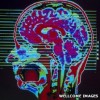
Jumping genes in your brain?
Apr 26th
Mobile chunks of DNA that walk their way from one position in the genome to another may affect neurological diseases and could have subtle influences on normal brain function and behavior, according to a recent study in Nature.
Alu is an example of a so-called “jumping gene” – a transposable DNA sequence that “reproduces” by copying itself and inserting into new locations throughout the genome. Alu elements are classified as SINEs, or Short INterspersed Elements. All Alus are approximately 300 bp in length and derive their name from a single recognition site for the restriction enzyme AluI located near the middle of the Alu More >
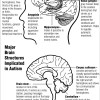
Multiple Paths to Autism
Apr 10th
There was a great deal of excitement last week as intriguing findings published in Nature yield clues into the mystery of autism. Autism, or more correctly put Autism Spectrum Disorders (ASD) are defects in neural development that manifest themselves early in childhood as affected children have difficulties in socialization and language skills. Like any childhood disease autism is unimaginably frustrating for the millions of parents and relatives that have to find the best way to cope with a child who will have unexpected needs. Even more frustrating perhaps is the unanswered questions surrounding the cause of the disease and the More >
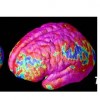
A new superdrug that fights pneumonia, pimples AND schizophrenia? Meet Minocycline.
Mar 26th
A cheap drug called Minocycline, which is normally prescribed for pneumonia and acne will be tested in a new trial to reduce the symptoms of psychosis in patients suffering from schizophrenia.
Schizophrenia is a mental disorder characterized by a breakdown of thought processes and by poor emotional responsiveness. According to the WHO the disorder affects around 0.3–0.7% of people at some point in their life, or 24 million people worldwide as of 2011. There is no general cure and the pharmacologic treatment of schizophrenia leaves much to be desired.
Now the National Institute for Health Research in the U.K. is funding a large research trial on More >
